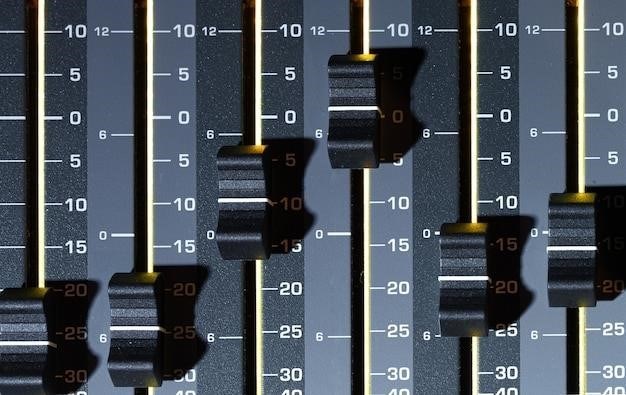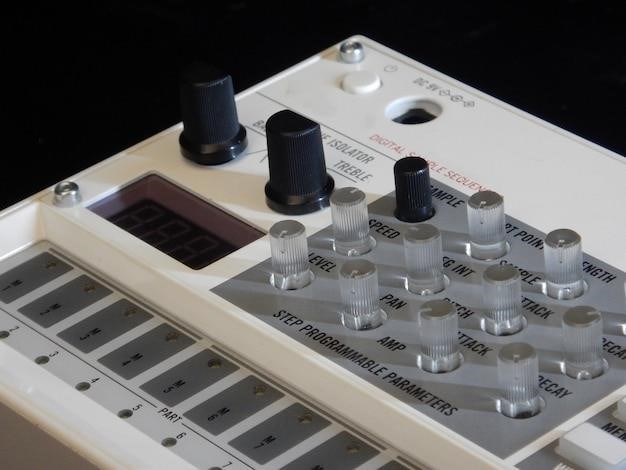
BOSS TU-3 Chromatic Tuner⁚ A Comprehensive Guide
This guide provides a comprehensive overview of the BOSS TU-3 Chromatic Tuner, covering its operation, features, and maintenance․ Learn about its various modes, accurate tuning capabilities, and how to troubleshoot common issues․ Explore power options and settings management for optimal use․ Discover resources for further assistance and support․
Power and Connectivity
The BOSS TU-3 offers versatile power options for convenient use in diverse settings․ Primarily, it operates using a standard 9V battery (6F22 type)․ This provides a portable solution for musicians on the go, ensuring tuning capabilities are readily available wherever needed․ For extended use and eliminating battery changes, an optional BOSS PSA series AC adapter is recommended․ This adapter offers a reliable and consistent power source, ideal for studio or stage use where continuous operation is essential․ Connecting the TU-3 is straightforward; simply plug your instrument (guitar or bass) into the designated INPUT jack․ This action simultaneously activates the tuner’s power, making the setup process quick and easy․ Remember to disconnect the instrument cable from the INPUT jack when not in use to conserve battery life and prevent accidental power drainage․
Modes of Operation⁚ Chromatic, Guitar, and Bass
The BOSS TU-3 provides three distinct tuning modes to cater to various instruments and playing styles․ The Chromatic mode offers the broadest tuning range, accurately detecting notes across the entire musical spectrum․ This mode is particularly useful for instruments beyond standard guitars and basses, or for those exploring microtonal music․ For guitarists, the dedicated Guitar mode simplifies the tuning process, focusing on the notes commonly used in guitar playing․ This targeted approach streamlines the tuning experience, making it quicker and more efficient for guitarists․ Similarly, the Bass mode optimizes tuning for bass guitars, recognizing the lower register and specific notes typical of bass lines․ Switching between these modes is easily achieved via a dedicated button on the tuner, allowing for seamless transitions between different instruments or tuning preferences․ The intuitive design of the TU-3 makes selecting the appropriate mode simple and straightforward, enhancing the overall usability of the tuner․

Display and Indicators⁚ Understanding the LED System
The BOSS TU-3 employs a highly visible and intuitive LED display system to provide clear and immediate feedback during the tuning process․ A row of LEDs precisely indicates the pitch of the played note relative to the target note, with the central LED illuminating when the note is perfectly in tune․ As the played note deviates from the target pitch, LEDs to the left or right of the center light up, indicating whether the note is flat or sharp․ The brighter the LEDs, the greater the deviation․ This visual representation is exceptionally user-friendly, even in dimly lit environments․ The clear and responsive nature of the LED display ensures quick and accurate tuning adjustments․ The system’s design prioritizes clarity and speed, making the TU-3 ideal for both live performances and practice sessions․ The accuracy of the LED system is complemented by the tuner’s overall precision, resulting in a reliable and efficient tuning experience․
Tuning Accuracy and Range⁚ Specifications and Capabilities
The BOSS TU-3 boasts exceptional tuning accuracy, measured in cents․ A cent is a unit of measurement for musical intervals, with 100 cents equaling one semitone․ The TU-3’s high precision ensures accurate tuning within a very narrow margin of error, contributing to the overall quality of the tuning process․ This makes it suitable for both professional musicians and beginners․ The tuner’s wide tuning range extends from C0 (16․35 Hz) to C8 (4186 Hz), encompassing a broad spectrum of musical notes․ This extensive range accommodates various instruments, including guitars, basses, and other chromatic instruments․ Whether you are tuning a low-frequency bass note or a high-pitched guitar string, the TU-3 offers the precision and range to accurately detect and display the note․ The combination of accuracy and range makes the TU-3 a versatile and reliable tuning tool for diverse musical applications․
Calibration and Reference Pitch⁚ Setting the A4 Frequency
The BOSS TU-3 allows for precise calibration of the reference pitch, specifically the A4 frequency․ The standard A4 frequency is 440 Hz, but different orchestras or musical ensembles might use slightly different reference pitches․ The TU-3 accommodates this by allowing you to adjust the A4 frequency within a range, typically from 436 Hz to 445 Hz in 1 Hz increments․ This adjustment ensures that your tuning matches the specific tuning standard required for your performance or recording context․ To adjust the A4 frequency, you usually need to press and hold a specific button on the TU-3 while simultaneously using another control (like a footswitch or rotary dial) to incrementally change the frequency until it matches your desired setting․ This calibration function is vital for maintaining consistency and accuracy across different musical environments and collaborations․ Accurate calibration ensures your instrument is precisely in tune relative to the established reference pitch․
Memory and Factory Reset⁚ Saving and Restoring Settings
The BOSS TU-3 boasts memory functionality, retaining certain settings even after power is switched off․ This includes the user-defined A4 reference pitch, ensuring consistent tuning across sessions; However, if you need to revert to the factory default settings, a factory reset option is available․ This process typically involves a specific button combination, often requiring holding down a mode select button while simultaneously pressing the power button․ This action will erase any custom A4 frequency settings and return all parameters to their original, pre-programmed state․ This is useful for troubleshooting or if you suspect incorrect settings are impacting your tuning accuracy․ The manual will detail the exact procedure for performing a factory reset․ Remember to consult your user manual for the precise steps to avoid any accidental data loss or unintended modifications․ Always double-check before executing the factory reset to avoid losing any preferred custom settings․
Power Supply Options⁚ Battery and AC Adapter
The BOSS TU-3 offers versatile power options, catering to diverse playing environments․ The most common power source is a standard 9V battery (6F22 type), offering convenient portability for rehearsals or gigs away from wall outlets․ Simply install a fresh battery in the designated compartment, ensuring correct polarity to prevent damage․ Battery life varies depending on usage, but generally provides ample time between replacements․ Alternatively, the TU-3 can be powered using a compatible BOSS PSA series AC adapter (sold separately)․ This provides a more permanent power solution, eliminating the need for frequent battery changes and ensuring consistent power during extended use․ Connecting the adapter ensures uninterrupted power, especially valuable during long performances or studio sessions․ Choose the power option best suited to your needs, balancing portability with the convenience of consistent power․ Always ensure you use a correctly specified adapter to avoid damaging the unit․ Refer to the manual for detailed instructions and compatibility information․
Troubleshooting Common Issues⁚ Addressing Potential Problems
Should you encounter issues with your BOSS TU-3, this section offers guidance on resolving common problems․ If the tuner fails to power on, first check the battery connection, ensuring correct polarity and sufficient charge․ If using an AC adapter, verify it’s properly connected and functioning correctly․ An unresponsive display might indicate a low battery or a faulty power source․ Try replacing the battery or using a different adapter․ Inaccurate readings could stem from a weak input signal; ensure your instrument cable is securely connected and functioning properly․ If the tuner displays erratic behavior, consider a factory reset by holding down the MODE button while powering on the unit; this restores default settings․ If problems persist after these checks, consult the comprehensive troubleshooting section of the official BOSS TU-3 manual or contact BOSS customer support for further assistance․ They offer resources to help resolve more complex issues, providing support and ensuring your tuner functions optimally․ Remember to carefully inspect the unit for any physical damage that could be affecting functionality․
Maintaining Your TU-3⁚ Care and Cleaning
Proper maintenance ensures your BOSS TU-3 tuner remains accurate and reliable․ Avoid dropping or subjecting the unit to harsh impacts; treat it with the care it deserves․ When cleaning, use a soft, slightly damp cloth to gently wipe the exterior, removing dust and grime․ Avoid using harsh chemicals or abrasive cleaners, as these could damage the surface․ For stubborn stains, try a mild solution of soap and water, ensuring the unit is completely dry before use․ Periodically inspect the battery compartment for any corrosion or debris, cleaning as needed to maintain optimal contact․ If you notice any unusual behavior, such as inaccurate readings or inconsistent functionality, refer to the troubleshooting section of the manual or seek assistance from BOSS support․ Remember, regular cleaning and careful handling will extend the lifespan of your TU-3, ensuring years of reliable service․ Preventative care is key to maintaining its peak performance․
Where to Find Additional Resources⁚ Manuals, FAQs, and Support
Beyond this guide, several resources offer further assistance with your BOSS TU-3 chromatic tuner․ The official BOSS website is your primary source for comprehensive information․ There, you’ll find downloadable PDF versions of the complete user manual, providing detailed instructions and specifications․ Frequently Asked Questions (FAQs) sections often address common user queries, offering quick solutions to minor problems․ Should you encounter issues not covered in the FAQs, BOSS provides dedicated customer support channels․ Contact information, typically including email addresses and phone numbers, is usually available on their website․ You might also find helpful user forums and online communities dedicated to BOSS products․ These platforms provide a space for users to share experiences, tips, and troubleshooting advice․ Remember to always refer to official BOSS resources first before seeking information from unofficial sources to ensure accuracy and reliability․ By utilizing these resources, you can maximize your understanding and enjoyment of your BOSS TU-3․
